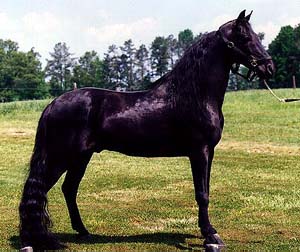Racking Horse
N/A
Sun, 20th April, 2025 - 5:48 pm GMT
Sponsor Ads:

Alternative Name
N/ABasic Info
The term "rack" was then the country nomenclature for the single foot. The main objective and the philosophy of the Racking Horse Breeders was to create an organization that was within the economic reach of the marketplace that would serve the amateur horseman, the person doing his own training at home, to being a member, a breeder, and a showring participant.
Health
N/AHabitat
N/ABehavior
The phenomenal growth of this breed can be directly attributed to its intelligence and versatility. Beginning riders cherish the smooth, easy gait and the calm temperament of the Racking Horse. Veteran horsemen admire his beauty and ability to perform anywhere from the work field to the show ring.Origin
AlabamaHistory
The Quarter Pony is a small scale replica of a Quarter Horse. Unlike the Quarter Horse, it may come in any color, or combination of colors. The Quarter pony has been around for many years, deriving from Quarter Horses not reaching the AQHA's minimum (14.2h) height requirement of the early years. Even though the AQHA's height requirement was later phased out, the quarter pony continued. The most recent evolution in the quarter pony industry is the acceptance of various colors and color patterns, rather than sticking to the original standard of only accepting solid colored ponies for registration. Acceptance of colors is enabling breeders to breed those all so sought-after color patterns such as the tobiano and overo paint patterns as well as the blanketed appaloosa patterns onto to the quarter pony size and conformation. Known quarter horse bloodlines are encouraged but not required. A group of Alabama businessmen headed by Joe D. Bright formed a corporation and initiated the legal maneuverings with the USDA to designate this horse as a distinct breed. A carefully studied program for this venture in the late 1960's was begun. He gathered knowledgeable horsemen long oriented in the breeding and raising of horses both for pleasure riding and show purposes to assist him in this effort. On May 23, 1971, a milestone in the equine history of America was reached. On this date the USDA recognized the Racking Horse Breeders' Association of America, thereby allowing a registry to be established to perpetuate the Racking Horse breed. Until this time the Racking Horse had been the only horse in the show rings of the nation not protected by a registry or a uniform set of rules. The primary function of the Racking Horse Breeders' Association was to "establish a registry to protect and perpetuate the breed".Common Foods
grassSponsor Ads:
Brontosaurus Principle: Organizations can grow faster than their brains can manage them in relation to their environment and to their own physiology; when this occurs, they are an endangered species.
Racking Horse
Coded by: BGID® | ALL RIGHTS RESERVED Copyright © 2000-2025
Disclaimer | Privacy | Report Errors / Contact | Credits








 Preparing For China. China is growing their military. China Military Technology - can it keep up with the US?
Preparing For China. China is growing their military. China Military Technology - can it keep up with the US?  versus
versus 

 versus
versus 
 This Thread is about the North Korean Military itself - the kind of army, navy, and air force they have.
This Thread is about the North Korean Military itself - the kind of army, navy, and air force they have. 
 versus
versus 
 versus
versus  versus
versus